
As we all know, the global pandemic has radically changed the routine of students attending face-to-face schooling throughout 2020 and 2021. As schools shift to online learning, the catch phrase, ‘Screen time, Green time’ from the inspirational Dr Kristy Goodwin, has begun to make its way around the educational field.
Yes, we live in a digital world and yes, the development of children’s skills in technology is paramount in order to compete in an ever-changing digital world. However, as teachers we also need to foster healthy habits with technology. This idea of ‘screen time, green time’ is a perfect way to instil such healthy habits.
Just like food, not all screen time is ‘nutritionally’ equal. Even if a parent avoids the ‘junk food apps’ and zones in on ‘phonics apps’, it’s still the Wild West with ample choice, few sign posts to direct you to quality content and some questionable phonics practices. It’s the early years where bad, hard-to-shift reading habits (e.g. guessing from the picture) can form. This is why it’s so important that teachers guide parents in making this decision when it comes to literacy and numeracy apps. The UK’s Department for Education has a handy document giving you points to consider when evaluating apps.
Phonics Hero systematically teaches children to read and spell using synthetic phonics and in 2020 was approved by the same Department for Education as covering all their core criteria in the document. As a teacher, you can recommend parents get a 7-day trial or you can get each student a 30-day trial of the Child Accounts by first setting up a Teacher Account.
Once your students are set up, put it in your daily plans and then monitor usage and children’s scores through your Teacher Account. We recommend a ‘little and often’ approach – ten minutes of play each day and you’ll see consistent progress and also which skills you might need to review.

So, we know what screen time is, but what is green time? Activities that allow us to move away from the screen, such as going for a walk, are regarded as green time. As teachers, we want our green time to not just be a physical education activity but an activity that is connected to other key learning areas such as literacy and numeracy.
Let’s have a look at my top ‘green time’ phonics activities:
Children collect natural materials from the garden – e.g. twigs, leaves, bark. The children use these natural materials to recreate the letter sounds that are being revised.
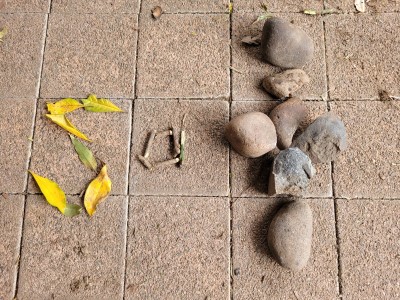
If the children can segment to spell words they can make words using their natural materials.
This is based on the letter sounds you are exploring with your students. Students go around their home and find objects that have that sound anywhere in the spoken word. They can collect about 5 different objects; draw them and segment to write the letter sounds they hear in the word.
Once children are working on blending, try Phonics Hero’s ‘Treasure Hunt’; there are indoor and outdoor decodable words for students to find.

Children write letter sounds on balloons, then have fun punching and catching balloons up in the air. As the children catch a balloon they say the sound on the balloon.
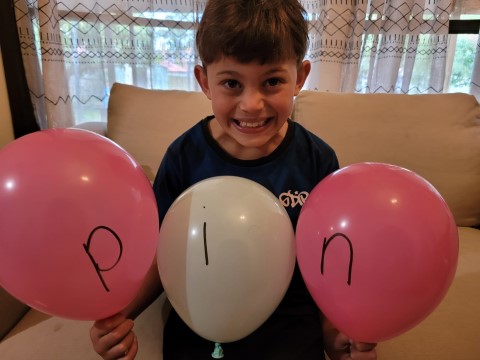
Children who are blending can arrange the balloons to make words.
Using a paint brush and a small container of water, children paint the letter sounds they are learning on the outside pavement. They can also paint a picture and segment the word to write it – all done with water and a paintbrush.
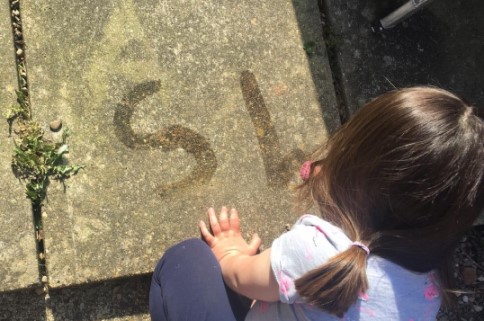
Using chalk, draw circles with regular words for blending written inside. Children jump and blend to read the words. This can also be done with letter sounds or tricky words.
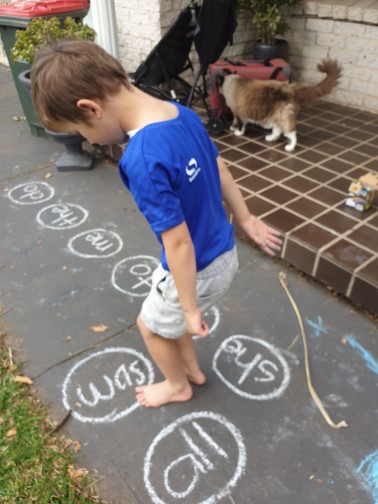
Lego might be the bane of every parent’s life (or at least their feet!) but it’s a very handy resource for reading practice. See how Phonics Hero CEO Katherine used Lego to teach the more advanced phonics code during the last lockdown.

I love looking around the house to find recyclables such as paper cups and egg cartons to create simple games. I used both of these items to create an activity to practice tricky words.

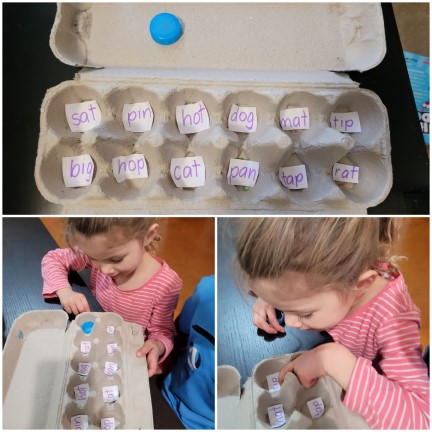
You might also like to check out Phonics Hero’s excellent ‘green time’ tricky word activities for home learning.
These activities are more than a break from screens. They are fun, engaging and promote creativity when boredom sets in. Thank you Dr Kristy Goodwin for your powerful phrase ‘screen time, green time’. Not only has this helped me instil healthy screen habits in my children – it’s also improved my own!